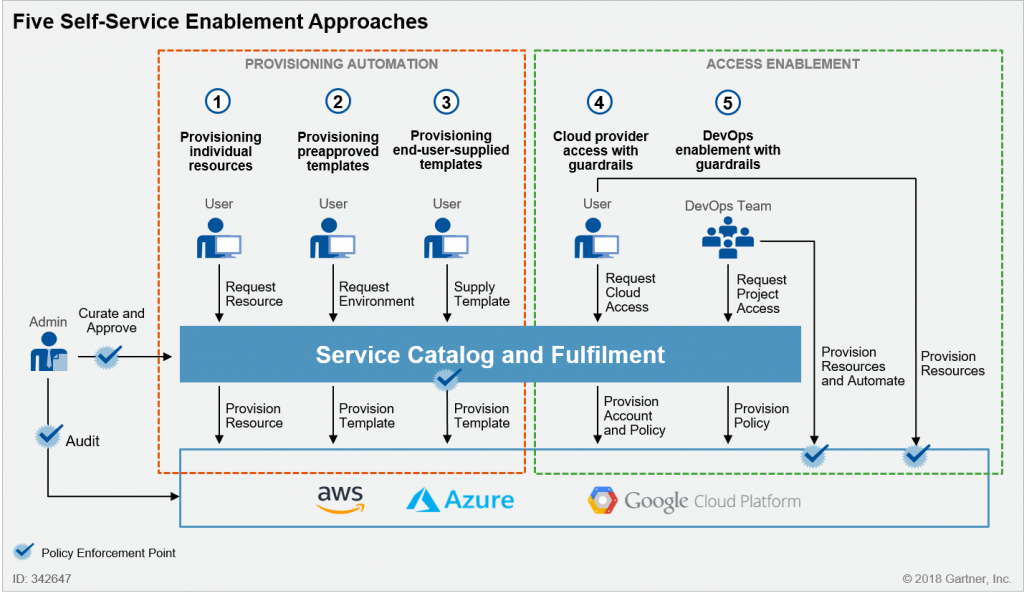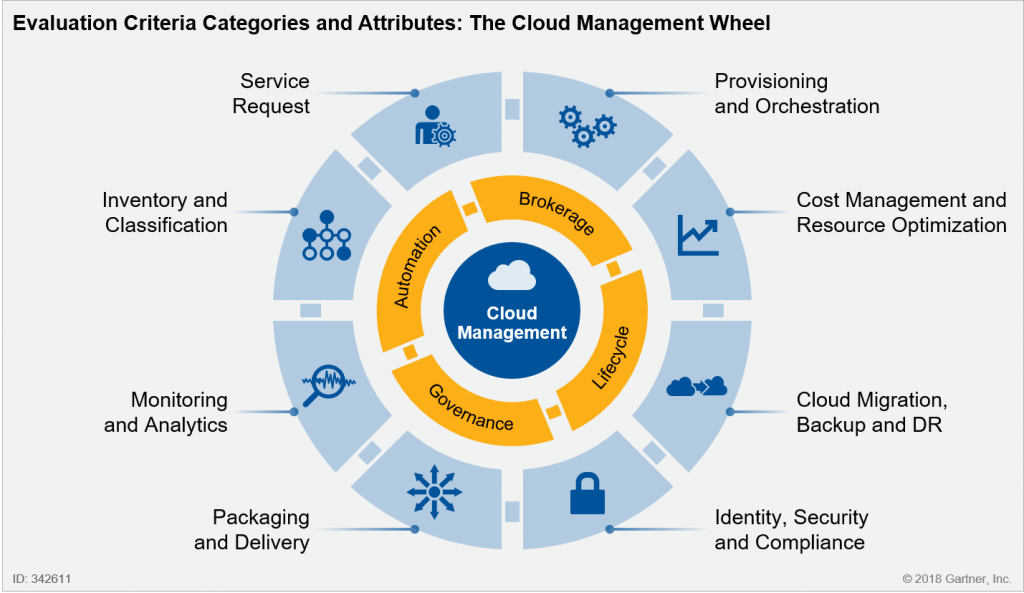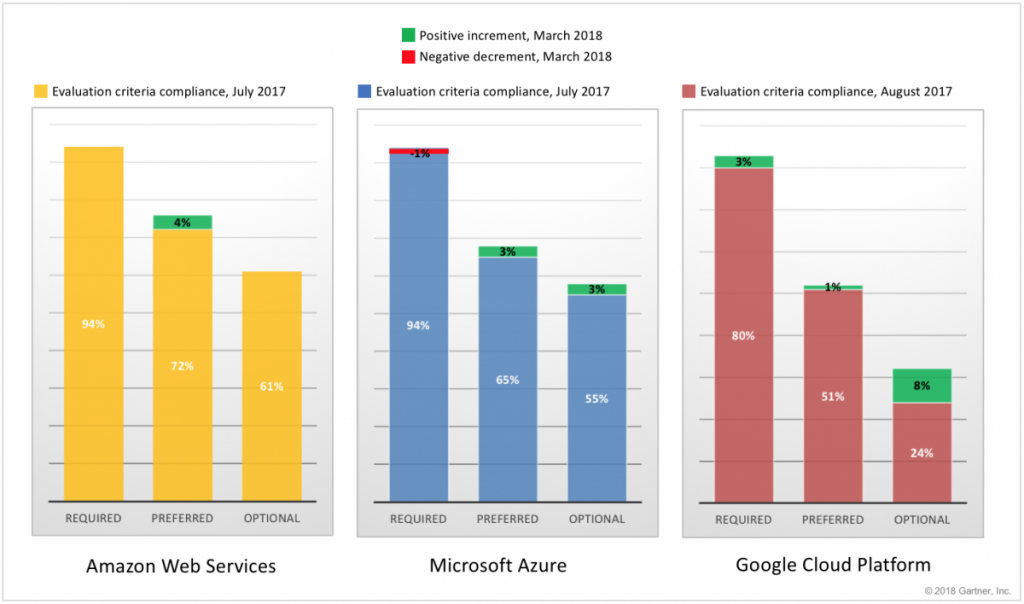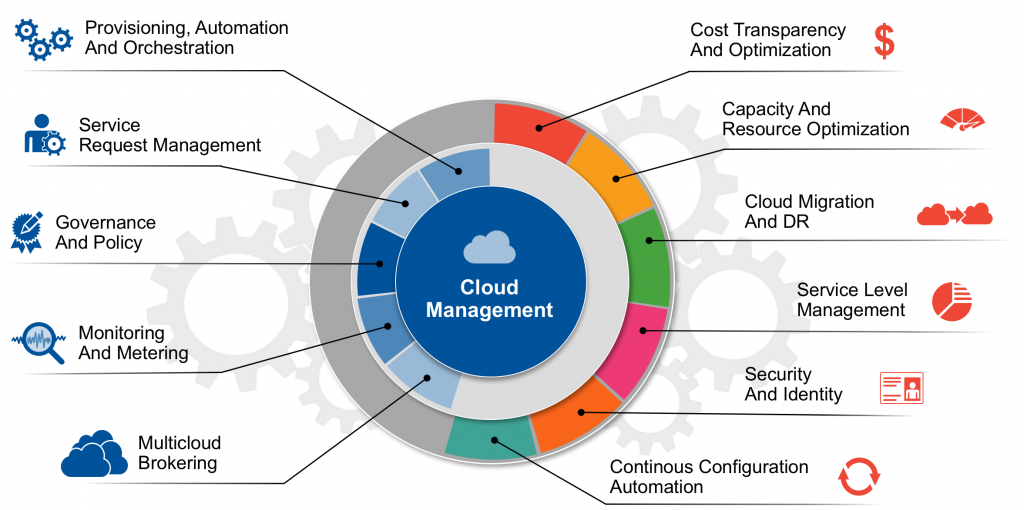This post originally appeared on the Gartner Blog Network.
The question on whether public cloud infrastructure is cheaper than running on-premises data centers keeps coming in client inquiries. Clients realize that most of the answers produced by the industry so far are skewed by the vested interests of whoever is coming up with those answer. Public cloud providers make their offerings look significantly more cost-effective than on-premises data centers. Hardware vendors promote the opposite view. Furthermore, within organizations themselves, internal politics continues to inevitably influence the results of any attempt to produce defensible calculations.
That’s why we decided to take a shot at answering this. I’m proud to announce that my research note “How to Develop a Business Case for the Adoption of Public Cloud IaaS” (paywall) is now available on gartner.com. The research provides guidance on how organizations should go about calculating TCOs and ROIs for their cloud adoption and migration projects. Gartner clients often struggle to quantify the cost savings that the cloud model can lead to as well as the potential for new revenue opportunities. As a results, clients often end up calculating cloud costs with the same buying patterns as they were using in their data centers, missing out on the optimization opportunities that public cloud infrastructure can offer. At the same time, clients struggle to quantify the necessary investments to skill up and operationalize cloud to take full advantage of the technology.
The research states that “cloud services can initially be more expensive than running on-premises data centers. [However, it also proves that] cloud services can become cost-effective over time if organizations learn to use and operate them more efficiently.” The statement is backed by an example of workload migration for 2,500 virtual machines from an on-premises data center to Amazon Web Services EC2. The example TCO (shown in the figure below) shows an initial uptake in cloud costs and a steady decline as soon as organizations learn how to apply cost optimization best practices (as described in this other framework). The chart also shows how on-premises costs may have a long tail as organizations take time to actually shut down their data centers.
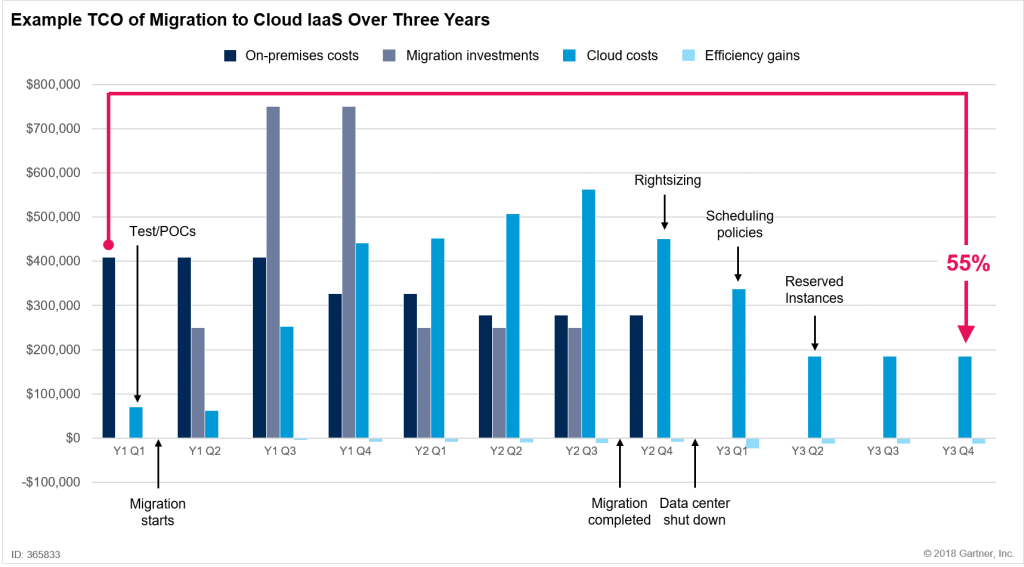
While the savings on infrastructure costs over time may look appealing, organizations should bear in mind that the overall ROI may be still negative in the short term due to the hefty investments in transformation and the long tail of on-premises data center costs. Furthermore, the example in Figure 1 is based on a number of assumptions (available in the research for consultation) that will not be representative of all situations. As a consequence, organizations that want to conduct a similar exercise should be prepared to tailor the assumptions, being aware of their impact on the final business case result.
To know more about this topic or if you would like to discuss further, you can read the research note at”How to Develop a Business Case for the Adoption of Public Cloud IaaS” (paywall) or reach out to your Gartner representative to schedule an inquiry call with me. Looking forward to hearing your comments!

